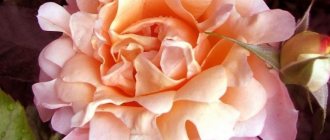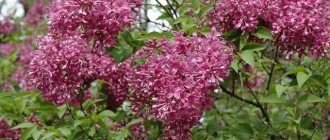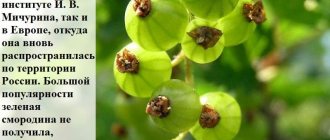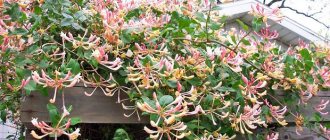Tips for planting, propagating and caring for flowers
The first of these options involves rooting cuttings in a greenhouse with constant maintenance of high humidity.
For this method, the tops of shoots about five to seven centimeters long are cut off at the beginning of summer. Cuttings taken from young trunks take root and grow very quickly, forming powerful bushes. Propagation by dividing the bush is an easy method that allows you to very quickly get a flowering plant. In one place, perennial aster Mix and other species can grow for up to five to six years. However, when the bushes grow strongly, gardeners prefer to replant them, dividing them into smaller bushes. It is better to do this every two to three years. Tall plants should be planted no closer than 70-90 cm from each other. Short specimens will feel comfortable at a distance of 30-50 centimeters.
For propagation by division, sections are cut from the mother bush. For this procedure, you should use a sharp knife. Each division should have three to five strong shoots. It is best to divide and plant aster in the spring. In this case, the plant will grow much faster and enter the flowering stage. Specimens planted in the fall are at risk of freezing and dying before they even have time to take root.
Winter sowing of asters is also possible. It is carried out in December. It is recommended to propagate the plant in this way if the height of the snow cover is no more than ten centimeters. After planting the seeds, the ground should be covered with dry compost. Sometimes this method of planting results in seedlings that are very weak and do not look like good varietal material. Due to the loss of germination, the seed propagation method of this type of flower is used quite rarely.
Watering and feeding aster
The best choice would be fertilizer in the form of special fertilizers, including the entire complex of minerals, as well as phosphorus-potassium mixtures.
Wintering aster bushes
In autumn, after frosts have appeared, the shoots are cut off at ground level. Experts advise mulching the soil with compost. The autumn aster plant is quite frost-resistant, so it does not need to be covered for the winter.
Choosing a place for culture
Many people like growing perennial asters, because these bushes can delight with bright flowers until late autumn.
Choosing the right soil
Poor soil should be fertilized using humus or compost and a few tablespoons of superphosphate. To reduce acidity, it is recommended to use dolomite flour or fluffed lime in an amount of 200 grams. After this, everything should be dug as deeply as possible. For growing a species such as the Wartburg star aster, low-lying areas with stagnant water are completely unsuitable. In this case, additional drainage is recommended. Fine crushed stone is well suited for this. Coarse sand, as well as river sand, can be added to the soil where asters are going to be planted. It improves the structure of the earth. Before planting, the area must be cleared of weeds, the soil must be loosened and leveled.
The soil on which calendula or marigolds previously grew is very suitable for planting aster. You should not plant this plant in flower beds where tulips, carnations or gladioli were previously grown. Since they often suffer from furaziosis, which causes fungal infections.
Caring for bush asters
When caring for this ornamental bush, it is important to remove old and weak plants. They are more susceptible to various infections
Preventive measures should be taken periodically to combat parasites and diseases. To stimulate the growth of an ornamental bush, the soil is not only sometimes fertilized, but also weeded and loosened. Read the article: Bush chrysanthemum: the best varieties for planting.
Reproduction technique and seed collection
Heather aster is propagated vegetatively and by seeds. It is difficult to obtain your own seed material. For them to ripen, at least 50 days must pass from the time of flowering. In a temperate climate in open ground this is unrealistic.
Read also: Shed between house and garage
Seeds
You get your heather aster seeds in two ways. One option is easy to implement, but does not guarantee germination, the second is more labor intensive, but allows you to obtain high-quality seed material:
- Cut off the inflorescences before the first frost. Place it on the windowsill. Wait until the seeds ripen.
- Dig up a bush. Plant it in a pot or bucket. Bring it into a room where the temperature does not rise above +20 °C. Provide the plant with adequate care and lighting. Collect ripened seeds.
Cuttings
The method allows you to preserve varietal characteristics. You can cut asters all summer long. For rooting in the garden, prepare a small ridge, fill it with earth, peat, sand (2: 1: 1). Algorithm for propagating asters by cuttings:
- Cut a 7 cm long piece from the top of the shoot.
- Plant in a greenhouse, deepening it by 3-4 cm.
- Water.
- Cover the ridge with film.
- After a month, the seedlings can be transplanted.
Dividing the bush
This method is used to propagate aster bushes at the age of 3-4 years. They just need to be transplanted to a new place. The division of the bush is carried out in the autumn:
- they dig up the bush from all sides and take it out;
- The rhizome is divided into parts with pruning shears;
- The divisions are planted in prepared holes and watered.
Just before frost, the bushes are covered. For this purpose, agrospan, lutrasil or organic covering materials (spruce branches, straw, leaves) are used.
Features of heather aster
Abundantly flowering inflorescences bend towards the ground, creating dense bushes. They are characterized by an oval-pyramidal shape. Gardeners have the opportunity to develop unusual compositions. A variety of baskets and flowers create a unique carpet. This culture is the best for developing landscape design in a garden or park.
Groundcover aster is characterized by abundant, long-lasting flowering. Heather aster can withstand temperatures down to −35 degrees. Heather aster is common in Europe and America. There it is planted in almost every garden plot.
What varieties of this species are there?
This crop is distinguished by its variety of varieties. It is also called a long-liver in the flowerbed, when other flowers have already faded, but it continues to delight the eye with its blooms. Herbstmyrthe is a gorgeous hybrid, over one meter high. The flowers are characterized by a white-lilac hue, the inflorescences are paniculate. The size in diameter is 10-12 mm. The flowers in the middle are yellow. They bloom in early September, delighting with flowering for a month and a half.
Erlkönig, this variety has a soft lilac petal color. The middle of the flower is bright yellow. The bush is characterized by branching, its height is no more than ten centimeters. Abundant flowering occurs in late September until November.
Bluestar is an unusual creeping heather aster. The bush reaches seventy centimeters in height. Since the foliage is small, needle-like, and the branches are squat, the heather aster resembles a low-growing conifer. Flowering continues from early August until the first frost, long and abundant.
Lady in Black is unusually decorative due to its almost black foliage, pinkish-brownish center and white tips of the petals. Many gardeners prefer this groundcover perennial for landscaping.
Aster heather snow town (Snow flurry) is a delightful ground cover that looks great in rock crevices and alpine slides. The abundant green carpet reaches only 10 cm and grows quickly. When flowering begins, the tiny white flowers resemble an avalanche. Hanging pots are well suited for growing hanging crops.
The pink cloud grows in the form of spherical bushes. Pale pink inflorescences are collected in numerous baskets. The variety is quite decorative; its charming appearance is maintained throughout the entire flowering period.
Many lovers of landscape design are attracted by the Golden Spray variety, which is a pyramidal bush in shape. The flowers are small, snow-white, and the center is deep yellow. It is quite large against the background of small flowers.
There are low-growing and tall-growing varieties. The latter includes the popular variety Royal Ruby, whose height reaches 1 m. The bush is quite vigorous. Paniculate inflorescences number up to 200 baskets. Flowering continues for two months.
Varieties of Aster teriflorus
The advantages of the perennial variety of asters include abundant flowering, which can last up to 2 months. The shape of the bushes of many varieties of heather aster is creeping. This quality is used by landscape designers. The crop is included in compositions that require ground cover and creeping plants.
Pink Cloud (Pink Cloud)
During flowering (from September to November), spherical bushes are strewn with pale pink small baskets. Heather aster Pink cloud remains decorative until frost.
Snow flurry
The name is true. During flowering, low bushes (10 cm) Snow flurry are covered with many white flowers and resemble a snow blanket. Gardeners plant Snow Avalanche on rocky hills. In summer it forms a dense carpet of dark green color and blooms closer to autumn.
Herbstmyrthe
Hybrid form with shoots up to 1 m long. Inflorescences are white-lilac, small, 10 mm in diameter. The core of the flowers is yellow with a burgundy tint. Herbstmyrthe begins to bloom in September. Finishes in 1.5 months.
Erlkonig
The center is bright yellow, the marginal petals are pale purple. Ground cover bushes with branched shoots up to 1 m long. Erlkonig blooms for 2 months from early September to November.
Blue star
A creeping variety of heather aster. The average height of the bush is 70 cm. During flowering, Blue star resembles heather and low-growing conifers due to its small, needle-like foliage. Flowering continues from August until the first frost. The flowers are pale blue.
Lady in Black
This variety is distinguished by its unusual leaf color. It is dark green and dark purple in places. The flowers are small, white with a pink-brown center. Lady in Black is used in group plantings as an ornamental ground cover crop.
Golden Spray
The bushes are dense, pyramidal in shape. The center is bright yellow, contrasting with the white marginal petals. The flowers are small.
Reproduction methods
There are several ways to get a new flowering crop.
Seed method
Planting material can be purchased at the store or collected in the fall after it has matured. It is recommended to plan planting work for the spring.
It is important that the air temperature at this time has already warmed up to +20, which occurs in different months in different climatic conditions. You can also germinate seeds at home, creating small greenhouses on a windowsill or other place.
For all options, the same requirement is to deepen the collected or purchased material into the ground by no more than 1 centimeter. As a soil mixture for home germination, it is recommended to use garden soil disinfected with a manganese solution, or a universal store-bought compound.
In the garden or indoors, seedlings are covered with glass or transparent polyethylene
It is important to regularly ventilate the greenhouse and moisten the seeds with water at room temperature. As a rule, seedlings of young asters will appear within a week or a week and a half
During this period, the covering material must be removed and the plants must be provided with good lighting. You can pick an aster when the first full leaves appear. When growing at home, transplanting crops into open ground is carried out after the young plants are sufficiently strong.
Cuttings
This method allows you to collect material for planting from the selected mother bush in any summer month. The most suitable material for planting will be cuttings taken from the top of the crop. The optimal length of the cuttings will be 7-9 centimeters; they are cut in cloudy weather. This must be done with a disinfected instrument.
The collected material is planted in any small container filled with sand and peat. At home, cuttings are germinated at some distance from light. In open ground, you can get a new aster by rooting cuttings in the ground, with additional cover in the form of transparent material. You can use plastic containers. As a rule, after a month the plant will already take root well in its new location.
Dividing the mother plant
Similar work is carried out in the spring. The process of obtaining a new plant involves separating a part of the bush, which will contain from 3 to 5 shoots with a root system and buds. The resulting part is rooted into a hole in the garden, regularly moistening the soil.
Propagation of perennials by seeds
For these purposes, they purchase seeds in stores, since it will not be possible to collect high-quality material on your own with the onset of frost. You can sow seeds in spring or autumn in frozen soil, covering them with humus. If the seed material is of high quality, then within 10 days friendly shoots will appear. Don't forget about watering. For preventive purposes, seedlings can be treated with Previkur, which will protect them from fungal infection, black leg and root rot. The drug is diluted according to the instructions.
Strong seedlings are thinned out, leaving a distance of 15 cm between them. They are planted in a permanent place in the fall. With this planting, the heather aster blooms the next year.
You can also use the seedling method. Seeds are placed in a damp cloth to speed up germination. The hatched seed material is planted in homemade greenhouses (containers that are covered with film). With the appearance of the 3rd true leaf, the seedlings take off. They fertilize, and can be planted in a permanent place when 6-7 leaves appear, when the threat of frost has passed.
Green cuttings
Propagating plants from green cuttings will be a complex process. But you can try. To do this, at the beginning of June, cuttings of 10 cm in size are cut. They are treated with Kornevin, and then planted in a pot, covered with a plastic bottle that has been cut. Rooting should occur within 30 days. After this period, you can periodically ventilate the cutting so that it gets used to changes in humidity. The cuttings are left in the same container until spring and then replanted. Flowering will occur only in the second year.
Popular: Growing a real, rare Lady's slipper orchid
Reproduction by layering
This method gives good results, rooting occurs without problems. Carefully separate several branches with roots from the mother plant and plant them in a permanent place. Moreover, you should take the side branches without touching the central part of the bush. The upper part of the shoots with buds is removed, which will facilitate the establishment process, since the young seedling will not expend additional energy on nutrition. Watering should be carried out constantly.
Propagation by dividing rhizomes
This propagation of heather aster ground cover is more effective. It is carried out in the autumn so that the plants can take root well before frost. For the winter they cover themselves with fallen leaves or spruce branches. Some gardeners believe that this work needs to be carried out in the spring, which will ensure better plant survival. Although the perennial takes root well. Plants that are at least three years old are used as cuttings.
Caring for a garden aster
Asters are unpretentious, so care will not take much effort and time from the gardener.
Watering and loosening
It is necessary to water the plants abundantly, but not too often. In dry summers, the water consumption rate per 1 m2 is 3 buckets. After each moistening, the soil will be loosened to a depth of 4-6 cm.
Weeding and hilling
To speed up the growth of the root mass before the aster stems begin to branch, it is recommended to hill up to a height of up to 8 cm. An important maintenance measure is clearing the soil of weeds.
Feeding
- 10 days after planting the seedlings in open ground, fertilizing is carried out using complex mineral fertilizers, which include nitrogen.
- During the budding phase, phosphorus-potassium fertilizers are applied to the plants.
- At the beginning of flowering, asters are fed a third time with fertilizers high in potassium and phosphorus.
Asters have faded - what to do?
If annual varieties grew on the site, then all plant residues should be removed and burned, after collecting seeds from the varieties you liked. Seed material can be sown before winter, but in a different area that is not infected with specialized harmful organisms. Perennial representatives of the crop are winter-hardy and can grow in one place for up to 5 years. When reaching the age limit after flowering, it is worth digging up the bushes and dividing them. Plant the cuttings in other areas.
A delicate and graceful flower can be affected by both diseases and pests if cultivation practices are violated. Among the diseases, the greatest danger is fusarium, which cannot be treated, as well as rust, powdery mildew and black leg, which develops in the seedling phase. Among the pests on asters, the meadow bug, slobbering pennies, arable slug, common earwig, spider mite, bud aphid and cutworm are noted, which should be combated with systemic insecticides.
How to plant a flower on the plot
The beginning of May is suitable for planting. It is advisable to perform the procedure on a cloudy day or in the evening. If the weather is clear, young plants are protected from the sun until they take root.
Requirements for soil and planting site
The heather aster loves the sun, but the openwork shade does not cause her discomfort. The optimal soil is sandy loam or loam.
Groundwater should not be high; aster withers when there is excess moisture.
Seed method
The seeds are placed in the ground early in the spring, buried 1 cm, not watered, but sprayed so that they do not float away. The sown area is covered with compost to retain soil moisture.
The sprouts should hatch after a week. After their appearance, the soil is periodically loosened and weeds are pulled out. When the first true leaves open, pick them.
Seeds can also be planted in the fall, when the soil is already frozen. The sown area is densely mulched with compost. Seedlings can be expected in the spring, but the heather aster will bloom only after a season.
We grow seedlings
Seeds for seedlings are sown in March. First, keep it on a moistened cloth until the sprouts hatch. Then they are planted in a container, immersed 0.5 cm in the substrate. The container is covered with polyethylene to create a greenhouse effect, and left in a room where the temperature is about +20 °C.
When the sprouts become noticeable, remove the plastic film and place the container in the light. Young plants should develop at a daytime temperature of +18 °C, night temperature – +16 °C. Picking is carried out when 3 true leaves appear. Planting in open ground is carried out when 6 leaves open and the stem stretches up to 8 cm. But before this, the seedlings are hardened off and periodically taken out into fresh air.
When planting in a chosen place, maintain a distance of 20-25 cm between plants. The distance between rows should be at least 0.5 m. The planted area is watered and mulched. Immediately after planting, the plants are not touched; watering is resumed after a week.
Varieties of perennial asters
There is simply an incredible number of varieties of perennial asters. All of them are divided into several types and according to ripening period.
- Alpine aster
.
This is an early plant that produces its first flowers in May. Varieties of this species grow up to 40 cm in height and are very similar to a simple chamomile. Their flowering lasts about a month. Flowers are up to 6 cm in diameter, very beautiful - 1-2 pieces per stem. They can withstand cold and even frost without any problems. What varieties of this species are the most famous?
Photo of alpine aster
- "Rosea" stands out for its long flowering. It blooms for up to 3 months, producing the first buds in June. The flowers are light pink, the core is brownish.
- "Alba" grows in a dense bush up to 40 cm. It produces a lot of leaves. The flowers are white, semi-double, 3 cm in diameter.
- "Glory" produces flowers with sky-blue petals and a yellow center, up to 4 cm in diameter.
Important! Some varieties of perennial asters can only be propagated using a certain type of propagation. So this point needs to be clarified before purchasing a seedling or seeds.
- New Belgian perennial asters
.
A shrub plant with an abundance of branches, and some branches may be completely without leaves. The flowers are usually simple, but some have petals that curl inward, creating a double effect. These plants grow up to 0.5 m. Many flowers grow on the stem. The main color is lilac, but there may be variations.
Photo of New Belgian perennial aster
- "Saturn" grows up to 0.5 cm in a spreading bush. Inflorescences up to 4 cm in diameter with blue petals. Flowering lasts a month.
- "Ballard" is most often used in bouquets and flower arrangements. Blooms lush with bright pink, small flowers.
- "Amethyst" grows just over 1 meter if not pruned. The petals are dark purple and the center is yellow. Each stem can have up to 6 flowers.
Interesting! Among the perennial asters there are different types, including dwarf ones, which can be grown in pots!
- New England aster
.
These plants have strong, developed bushes with straight stems. Their shoots are thick, woody, up to 1.5 meters in height. The inflorescences are mainly at the top of the bush. These are autumn varieties that bloom quite late.
Photo of New England aster
- "Rote Stern" grows up to 1.5 meters. The flowers are larger and look like double ones. Carmine color. It blooms in autumn for about a month.
- "Doctor Eckener" has red-purple buds with a diameter of 4 cm. This bush can grow up to 1.5 meters. It blooms in the fall for a whole month.
- "Lily Fardell" grows just under 1.5 meters. Gives beautiful pink flowers, which are collected in inflorescences on pagons. Recommended for making bouquets.
Important! Once every 5 years, it is recommended to plant New England aster bushes so that they have time to develop.
- Shrub species
.
Shrubby perennial asters can have a wide variety of flower colors. They are usually compact, require pruning and are rejuvenated every 3 years.
Photo of shrub aster 'Schneekissen', white
- "Dwarf Nancy" grows up to 25 cm. The flowers are lilac, with reed petals.
- "Venus" is a dwarf species up to 20 cm in height. It blooms from September for a whole month. The buds are purple.
- "Niobe" produces flowers with snow-white petals and a yellow center. Grows in a bush 30 cm high.
Description of the ground cover heather aster
The plant belongs to the Asteraceae family. The culture is characterized by strong, well-branched shoots reaching 70-100 cm in height. Externally, the flower resembles a shaggy bush.
The upper leaf plates of the heather aster are small in size, up to 1-1.5 cm in length, needle-shaped, arranged alternately. Their color is dark green. The lower leaf plates grow up to 6 cm in length, spatulate in shape.
Flowering in most varieties of perennial groundcover heather aster continues throughout the fall: from September to November. The buds have a pleasant aroma and a variety of colors: light purple, white or blue with a brown center.
Wild aster has small, white or pinkish flowers.
The family is characterized not only by frost resistance, but also by the ability to withstand temperature fluctuations. Plants are not afraid of spring frosts and periods of drought.
Important! Heather aster buds can withstand frosts down to -6 ⁰C.
The culture is characterized by rapid growth in width, which requires the construction of restrictions. If the branches are not tied up, they gradually bend downwards. Young shrubs have a spherical shape. Designers use this characteristic feature to create various landscape compositions from shrubs.
After flowering ends, flat-shaped seeds are formed. Since the buds of the heather aster form in the autumn months, the seed does not have time to ripen. This characteristic feature forces gardeners to abandon the propagation of heather aster by seeds.
How to grow a low-growing aster
Aster grows well in sunny areas, but can withstand light shade. Low-growing varieties of asters can be planted in whole groups, or borders can be made from bushes. Bright bushes of autumn aster can be a soloist in a flower bed. Low-growing varieties of aster can be used to frame garden paths. Planting these plants is very simple.
Site selection
In order for your asters to bloom magnificently in the fall and grow well for several years without transplanting, you should choose the right site for them. The best place to plant perennial asters is a sunny area. The more sunlight the bushes receive, the more abundantly and luxuriantly they will bloom. Astra, of course, loves watering in dry weather, but at the same time does not tolerate stagnant water. Therefore, a site for it must be selected without groundwater and not in a lowland. It is ideal if the chosen location is on a slight hill so that water does not accumulate at the roots of the bushes.
On the north side of the site, this plant will not bloom profusely - the aster loves warmth and sun.
Landing
The best period for planting, transplanting and propagating perennial aster is spring. Experienced flower growers, in order not to infect their garden with viral diseases of garden plants, prefer to buy planting material in nurseries or in specialized stores. You can also grow aster from seeds or by cuttings or dividing a bush, if you already have such plants.
Seed method of propagating aster
The seed method of growing perennial aster is suitable only for the Alpine aster variety. The fact is that perennial aster seedlings take root very poorly and grow weakened. Seeds are sown in the fall, almost immediately after they are collected. But you can sow seeds in the spring, when the air and soil are warm enough. As soon as it gets warm, the seeds will begin to germinate, and in the fall the young plants can be planted in a permanent place in the garden. In one place, a flower can grow without transplantation for up to 5 years.
Growing perennial aster from cuttings
A very common planting of this perennial crop is cuttings. Cuttings should begin in early spring, at the moment when young shoots begin to appear. Shoots 15 cm long are cut into cuttings; the lower cut should be at an angle. The lower leaves are torn off from the cuttings, leaving only two leaves at the top of the shoot. Before planting, many experienced gardeners soak cuttings in a growth stimulant or simply in water. The prepared cuttings are planted at angles in a shaded area under a cover of film. Usually cuttings take root within a month. You can plant cuttings in greenhouses or in boxes under film. The boxes are filled with a mixture of turf soil, peat and sand, taken in equal parts. It is advisable to spill the soil with a weak solution of potassium permanganate before planting to prevent the occurrence of diseases in young plants. After rooting, the cuttings are left to grow in the same place, and only in the spring of the next year they are planted in a permanent place in the garden. Caring for cuttings involves regular watering and weeding. Planting a shrub aster is no different from planting other perennials - a hole is dug, water is spilled, the plant is lowered into the hole and covered with earth.
Dividing the bush
If your perennial aster bushes have grown greatly, you can divide them into several young plants. Typically, an aster bush grows in the same place without replanting for up to 5 years. But after 5 years the plant must be replanted. When dividing the mother bush, it is dug up and the roots are freed from the ground. Then, with a sharp tool, divide the rhizome into several parts, making sure that several shoots remain on each division. The old root must be thrown away.
Divide the bushes in early autumn or spring. For early varieties of aster, autumn replanting is preferable, and for late varieties, spring replanting.
How to choose a place for an aster
It is recommended to plant the crop in a garden and park area, in a flower bed. No matter where it grows, it will always please the eye. Heather aster feels great on the sunny side of the site. Can also be planted in light partial shade. Prefers loamy or sandy soil. It does not prefer excess moisture, so it should not be planted in places where groundwater lies nearby.
A good predecessor for this crop is calendula. You should not plant where gladioli or tulips previously grew, which transmit fungal diseases. Sentyabrinka, as it is also lovingly called by the people (pokrovka, oktyabrinka), intensively grows rhizomes. Gardeners recommend planting it on the south side of the site. Replant every 4-5 years to avoid the spread of pathogenic bacteria.
How to prepare a site for perennial aster
Preparatory work related to the soil begins in early autumn. They involve fertilizing the soil with humus and then digging it up. When the soil is not particularly fertile, mineral fertilizers (superphosphate, ammonium sulfate) are applied and harrowed forty to six centimeters deep.
Lime should be added to acidic soil. Placement of fine crushed stone is required when the soil moisture is high. Preparatory planting work consists of loosening the soil. It also needs to be cleared of weeds and sufficiently moistened.
Features of growing a plant
Heather aster is not a capricious crop; it is unpretentious in care and can grow in almost any conditions. However, there are requirements that it is advisable to fulfill in order for the plant to fully develop and please the eye:
Asters love to grow in open sunny areas or where there is slight partial shade. In order for the heather aster to bloom profusely and develop well, it is necessary to create conditions that are as similar as possible to natural ones. Do not plant the flower in heavily shaded areas. In this case, the plant will be painful and parasites will begin to attack it. Almost any type of soil is suitable for growing a wild variety of plants, except swampy, saline and heavy soil.
If cultivated heather aster is grown, planting and caring for it should be more thorough. For this variety you need to choose the right soil
Ideally, it should be loamy, fertilized, moderately moistened; it is equally important to ensure good drainage.
If the soil on the site does not contain the microelements necessary for normal growth, organic fertilizers must be applied before planting. It can be humus or compost. When planting in spring, it is advisable to add nitrogen fertilizers (20 g) to the soil, this will speed up the growth of the plant. The most common method of propagating flowers is division.
It is best to plant the plant in the spring. The cuttings quickly take root and begin to bloom by autumn. The disadvantage of autumn planting is that not all seedlings have time to take root. The onset of early frosts can lead to the death of a fragile plant.
These flowers do not require complex care. Heather groundcover aster is not picky, but still, in order for the plant to be healthy and beautiful, effort should be made. Regular watering is important for her, but it must be done exclusively with settled warm water. Periodically, you need to add mineral and organic fertilizers to the soil; they stimulate plant growth. Weeding and loosening should be done as needed. Although the heather aster is not very susceptible to diseases and various pests, prevention will not harm it.
It is important to remember that poor soil moisture and lack of fertilizers lead to the leaves of the flower quickly turning yellow and withering. This reduces the frost-resistant and decorative properties of the plant.
Landing
Heather aster seedlings are considered ready for transplanting to a new place when 6 leaves are formed on it and the height reaches 7 cm. They are hardened for another 2 weeks, then it quickly adapts to open ground conditions.
Selecting a location
In the shade, the crop often gets sick. Due to weakened immunity, it is subject to frequent attacks by insects. The heather aster, planted in a sunny place, pleases with abundant flowering. Calendula is considered a good predecessor to perennials.
Flower growers do not recommend planting aster after tulips and gladioli. Gardeners note that plants planted in the southern part of the garden bloom earlier and bloom more abundantly.
Soil preparation
Heather aster grows best on loam that is fertilized before planting. Organic matter (humus) is added to the soil. Do not forget about the standard set of fertilizers:
- superphosphate;
- potassium salt;
- urea (only in spring).
Acidity is reduced with dolomite flour. High humidity is controlled with a layer of crushed stone or other drainage.
Planting rules
Seedlings are planted in open ground in May. Maintain an interval of 15-25 cm, and at least 0.5 m between two rows. After planting, the holes are watered and mulched with humus. During the first week, the heather aster is not watered.
See also
Description of Katevbinsky rhododendron species, planting and care rulesRead
Heather aster seedlings planted on a cloudy day take root faster. If the days are sunny, the flowerbed is covered with agrospan, cardboard or other available material that does not allow sunlight to pass through. The shelter is removed on the 3-5th day.
Rules for planting aster
Planting must be carried out in accordance with certain requirements. Gardeners advise planting in early May. The soil should be slightly moist. The interval between sprouts should be fifteen to twenty centimeters. Three days after planting, the first watering is required. After seven days, fertilize with mullein solution. It is better to carry out work in the evening. It is good to conduct them in cloudy weather. If the sun is shining, the seedlings should be covered for a certain period until they take root.
Recommendations for plant care
Professional gardeners explain that planting and caring for heather aster is a simple procedure. You should follow simple rules, which will ensure decorativeness and good flowering of plants. Watering should be regular but moderate. Water is taken that has settled. During the dry period, it is necessary to provide abundant watering, but it is better to stick to the golden mean so as not to overdo it with watering. In this case, it is necessary to prevent water from getting on the leaves of the heather aster.
In order for the aster to delight with abundant flowering, it must be fertilized at least three times per season. To do this, use complete mineral or organic fertilizers. Adding ash to the soil gives good results. This helps to reduce the acidity of the soil and enrich it with potassium.
It is recommended to periodically loosen the trunk circles of the New England aster to provide the rhizomes with the necessary oxygen. But loosening should be superficial, to a depth of no more than six cm. This is explained by the superficial root system. In conditions of insufficient air exchange and nutrients, disease is inevitable. They can be caused by fungi.
Weeds and fading inflorescences should be removed promptly. Since the crop can withstand frost, it is not covered for the winter, but only the above-ground part is cut off, leaving 20-30 cm above the ground. When the plant reaches a height of fifty to seventy-five centimeters, a support should be installed. It will provide support to the plant during the growth process. You can prevent diseases and stimulate abundant flowering by planting asters every 2-3 years. The best period will be April. If the heather aster was not pruned for wintering, then the dried shoots are removed in early spring.
Pests of heather aster
Periodically, shrubs need to be inspected for timely detection of diseases. In dry weather, the crop is threatened by spider mites, which can be controlled with an acaricide or an infusion of onion peels. The danger is represented by a nematode that causes brown spots to appear. Damaged leaves are removed manually. If this does not help, then the entire bush should be removed.
Powdery mildew in the form of a white coating can damage plantings. This is especially true in rainy weather. To combat this disease, fungicides of synthetic origin are used, as well as products containing copper. The most effective drugs are Topaz, Skor, etc. For preventive measures, copper sulfate or Bordeaux mixture is used.
Fusarium wilt can lead to the death of the bush. There are currently no effective drugs for it. The plant is removed and then burned. The danger threatens plants on loamy acidic soil at high daytime temperatures. You can fight the meadow bug with the help of such means as Aktara, Decis. The insecticide needs to be changed periodically so as not to cause the pests to become addicted.
Pests and diseases
The perennial has strong immunity. It can only be weakened by poor care or climate, prolonged rains or other disasters.
Nematodes and spider mites can harm the heather aster. To destroy them, the plant is irrigated with an insecticide solution: Actellik, Akarin, Fitohit, Chlorpicrin, Neoron.
Heather aster growing in the shade is more often attacked by fungal pathogens. One of them is powdery mildew.
If a white coating appears on the leaf blades, the bush should be treated with copper sulfate
Rust can transfer from coniferous crops to heather aster. To determine it, you need to examine the underside of the plant's leaves: brown pustules will be present on it. Gradually the leaves curl and fall off.
As a therapeutic measure, all affected parts of the bush should be removed, the plant itself should be irrigated with fungicides, and the soil around it should be spilled with a solution of the drug.
Among the serious diseases that can affect heather asters is gray rot. To determine it, they inspect the plant; it changes color to brown, begins to rot and becomes covered with a smoky coating.
Treatment of shrubs from rot is carried out by irrigating the perennial with a 1% solution of Bordeaux mixture for 30 days with an interval of 10 days, and all affected parts are removed and burned
The main methods of prevention are competent care. The main causes of diseases are waterlogging of the soil and planting heather aster in the shade.
Growing asters from seeds
Aster is grown from seeds in two ways: seedlings and non-seedlings.
Non-seedling planting of asters
Sowing of early varieties is carried out in early or mid-March, and later varieties - in the second half of spring, when consistently warm weather above 10°C has established.
Wherein:
- Grooves 4 cm deep are prepared.
- Seeds are placed in the grooves and filled with water.
- With the arrival of dry weather, the crops are mulched.
- After the seedlings have formed two pairs of true leaves, the rows are thinned out so that there is an interval of 15 cm between the seedlings.
In addition to spring, asters are planted in the fall before winter:
- Grooves are made along the frozen soil into which seed is placed, which is practically not damaged by fusarium.
- After the snow melts in the spring and seedlings appear, thinning is carried out.
Sowing aster for seedlings
The seedling method is more reliable, and the grower will be able to admire asters grown through seedlings much earlier.
Sowing is carried out in the first half of spring as follows:
- 7 days before sowing, the seed, wrapped in cloth, is soaked in a manganese solution for 10 hours.
- After the allotted time, the fabric is wrung out and, along with the seeds, placed in cellophane for germination.
- The seedling boxes are filled with a light substrate, which is watered with a fungicidal solution for disinfection.
- Seeds are planted to a depth of 5 mm.
- The container is covered with glass and then moved to a warm place.
- When shoots appear, the seedlings are taken into a room with a temperature of 16°C.
- After the seedlings have two pairs of true leaves, they are picked and the roots are shortened.
Planting heather aster in the ground
Seedlings are planted in open ground after 6-7 true leaves have grown. In this case, you need to harden the seedlings in advance: you need to take the seedlings out into the open air for two hours. The plant prefers sunny areas without stagnant moisture and groundwater.
Planting of aster begins in early May, in loose soil. Before planting, prepared beds must be watered. After 7 days, the flowers need to be fed with rotted manure.
It is better to plant seedlings in the evening.
In autumn, fertilizer is added to the soil when digging it. With the beginning of spring, mineral fertilizers are also needed. Astra responds well to superphosphate, ammonium sulfate or potassium salt.
For acidified and slightly loose soils, lime is added to it. And if the soil is highly moist, it is necessary to make drainage from fine crushed stone.
How to grow?
Heather aster does not require much care. She is not capricious and unpretentious
And yet, in order for the plant to receive all the conditions for normal growth and development, it is necessary to pay attention to the following nuances:
Asters will do well on the floor - a darkened or sunny area. In order for a plant to delight you with abundant flowering, its conditions must be similar to natural ones. The flower should not be kept in very dark places, as it will be attacked by harmful insects and will often get sick.
The wild variety of aster can grow in any soil. The exception will be heavy, swampy and saline soil. Growing a cultivated flower, the heather aster, requires more careful care. And you need to start from the soil. Loamy and fertilized soil will be optimal, into which fertilizers will need to be applied. You should also ensure good drainage. If there are no microelements in the soil in the selected area, you should first fertilize the soil with organic fertilizers consisting of compost or humus before planting the aster. Spring planting of flowers requires adding nitrogen to the soil, which is necessary to accelerate the growth of the flower.
Diseases and pests
The perennial rarely gets sick. The disease can be caused by poor care or weather disasters. The decorative appearance of the heather aster can be damaged by insects:
- nematodes;
- spider mite.
Leaves affected by the nematode are torn off and destroyed. Aster can be saved from spider mites by infusion of onion peel or by treatment with an insecticide.
Heather aster growing in the shade and not receiving proper care is susceptible to fungal infections:
- powdery mildew;
- gray rot;
- ring spot.
Sick plants are treated with copper sulfate (grey rot), “Fundazol” (spotting).
New England aster in landscape design
Gardeners are especially attracted by its ground cover properties. In addition to rock gardens and park areas, the plant looks good under tall stands of conifers. This is possible due to the fact that the culture can withstand slight partial shade. When placing a plant in the garden, late flowering is taken into account. Tall varieties are optimal for single plantings. They are planted in the background. They are excellent as a hedge. Heather aster is a favorite flower for the landscape.
Bushes do a good job of camouflaging buildings and fences that are not attractive enough. Low varieties look good in mixborders. They are combined with plantings of Korean chrysanthemums.
Planting of the crop takes place in the background of the ridges. Annual varieties are placed in front. Their attractiveness is expressed in their lacy foliage. After the flowering of the summer flowers is completed, the variety of colors of the aster comes to replace it. For ridges, it is better to choose low-growing varieties. Its excellent neighbors will be yarrow and rudbeckia. Representatives of this species go well with solidago and liatris, which have faded.
Varieties with pink flowers look great with Japanese spirea of the same color. But still, single plantings are good when the bushes acquire cone-shaped or lush rounded shapes. Flower growers are also attracted by its low maintenance requirements. It is the final chord in the autumn colors of a blooming garden. Decorative foliage is great for arranging bouquets. Cut flowers last up to two weeks in a flowerpot as a reminder of summer.
You rarely see the heather-like aster in the gardens of our compatriots, but in America and Canada this perennial creeping crop is very popular. Gardeners value it for its decorative appearance, unpretentiousness and delicate aroma. The culture pleases its owners with abundant flowering from September to November.
How to propagate?
Heather asters can be propagated in several ways.
Seeds
Quite a popular method of breeding asters. In this case, the seeds are planted in the ground in early spring. The soil must first be loosened, mixed with peat, rotted compost and river sand. Bury the seed material by 1-1.5 cm and spray it with a drip method - otherwise the seeds will float away with the water.
The top of the substrate should certainly be covered with mulch; it is best to use compost, it will protect the soil from drying out and at the same time saturate it with micronutrients.
As the seedling grows, it is necessary to carefully loosen the soil from time to time and remove weeds along with the roots. The very first shoots can be seen after 7-10 days. After the first full-fledged leaves appear, they need to be picked and planted in a permanent place.
Read also: Instant sauerkraut in a jar
If desired, you can plant the seeds in the fall in slightly frozen soil with mandatory deepening. The soil on top of the sowing should be covered with compost mulch. The first shoots will appear in the spring, but flowering can only be achieved the next year.
Seedling
Heather aster can be propagated through seedlings. To do this, before planting, the seeds are soaked in a moistened napkin and planted in a prepared container to a depth of 0.5 cm. The sowing is covered with film and moved to a warm, bright place. From time to time you need to remove the film to ventilate the greenhouse.
Sprouts appear in about a week, immediately after this the film must be removed. As soon as a pair of true leaves appear, the seedlings are planted in separate containers.
After 2 weeks, the seedlings should be fed - for this, complex preparations or ammonium nitrate (1 g/l) are used, and after another 2 weeks they are treated with superphosphate (1.5 g/l).
Rhizome division
In this case, the plant is dug up along with the root system and carefully divided into parts, after which each is planted in separate holes, sprinkled with a nutrient substrate and watered.
Description and photo of alpine ground cover aster
Alpine aster is common in Europe, Asia, the Urals and Transcarpathia. This semi-shrub crop is a prominent representative of asteraceous herbaceous plants. Perennial alpine asters are low-growing, their length does not exceed 30 cm. If the illumination of the area is good, the plant takes the form of a lush bush.
The aster root is thickened, superficial, branched, growing horizontally. This allows the culture to survive in mountainous, rocky areas. From each root shoot a strong, slightly pubescent branched stem is formed, densely dotted with thin, long, velvety leaves of a dark green color. At the base of the root they are large, closer to the ends of the stem they become smaller.
The flowers are shaped like a chamomile, their diameter does not exceed 5 cm. The petals are arranged around a bright yellow core in 2-3 rows. Flowers can be lilac, pink, purple, white. Varietal and hybrid alpine asters are distinguished by a variety of shapes and colors of inflorescences.
At the end of July or at the beginning of August, the aster fades. In place of the buds, baskets with small seeds appear, at the ends of which there is a hairy tuft. With its help, the seeds scatter over long distances and sow on their own. Aster can be propagated by seeds; they retain all the varietal qualities of the mother plant.
Important! Varietal varieties of alpine perennial aster are distinguished by lush and abundant flowering.
Reproduction by division
Perennial asters can be planted by dividing the bush. In this case, the plant must be at least 5 years old. Planting is done in the autumn, immediately after flowering ends. Division should be done very carefully, since the aster's root system is very delicate. After planting, the plant does not have time to fully strengthen before frost, so it is recommended to cover it with dry leaves or spruce branches.
Annual asters
Garden aster, or callistephus
Or the Chinese aster, an annual relative of the perennial aster, today represented by more than 4,000 varieties. Sometimes annual asters are so different from asters themselves that they can be confused with dahlias, chrysanthemums, peonies and other flowers. Trying to bring order to this incredible variety of varieties and species, scientists have created different classifications, but none of them is perfect. Let us briefly introduce you to some of these classifications.
According to the time of flowering, asters are divided into:
- early (bloom from July);
- medium (bloom from early August);
- late (bloom from mid or late August).
According to the height of the bush, asters are divided into five groups:
- dwarf (up to 25 cm);
- short (up to 35 cm);
- medium-sized (up to 60 cm);
- tall (up to 80 cm);
- giant (above 80 cm);
There are three groups according to the purpose of cultivation:
- cut flowers (tall, large flowers, long peduncles);
- casing (compact, low, good both for flower beds and as potted plants);
- universal (compact, medium size, long peduncles, large inflorescences).
According to the structure of the inflorescences, asters are divided into three groups:
- tubular - inflorescences consist exclusively of tubular flowers;
- transitional - inflorescences have 1-2 rows of reed flowers and tubular flowers filling the middle;
- reed - inflorescences in which the reed flowers cover the tubular ones or there are no tubular ones at all.
The reed group is divided according to the principle of the structure of inflorescences into the following types:
Non-double simple
- Edelweiss, Pinocchio, Waldersee - varieties with small inflorescences;
- Salome is a variety with medium inflorescences;
- Rainboy, Margarita - varieties with large inflorescences;
- Madeline, Zonenstein - varieties with very large inflorescences.
Coronet
- Ariake, Tikuma - small inflorescences;
- Aurora, Prinetta, Laplata - average;
- Princess, Anemone aster, Ramona - large;
- Erfordia, Giant Princess, Fantasia are very large.
Semi-double
- small: Victoria, Matsumoto;
- middle: Mignon, Rosette.
Curly
- Comet, Tiger Pavs – medium inflorescences;
- Ostrich Feather, Market Queen - large;
- Chrysanthemum aster, Californian giant.
Ball-shaped (spherical)
- Milady, Lido, Triumph - medium inflorescences;
- American beauty, Germany, peony aster - large inflorescences;
- Globular - very large inflorescences.
imbricated
- Voronezhskaya, Victoria, Thousandschen - medium inflorescences.
Needle-shaped
- Record, Exotic – medium inflorescences;
- Riviera, Star - large;
- Compliment, Rizen, Yubileynaya - very large.
Hemispherical
- medium inflorescences: Miss, Amor, Rose-shaped
- Pompom aster - large inflorescences.
But there is no classification based on the color of flowers, although there are a great many colors and shades of asters: different shades of blue, which is quite a rare occurrence in the world of flowers, purple, lilac, cream, yellow, pink, red, not to mention white. There are two-color asters. There are only green and orange asters yet.
It is worth noting once again that none of the classifications is complete and flawless, especially since every year more and more new types of beautiful specimens appear that are difficult to attribute to existing species and variety groups.
Botanical description
Asters are rhizomatous plants with simple leaves, the inflorescences are baskets collected in panicles or corymbs, their marginal flowers are ligulate in various shades, and the central ones are tubular, small, almost always yellow. Asters have been cultivated in Europe since the 17th century, and flower scientists have succeeded in selection, growing varieties of amazing beauty, among which there are specimens of all kinds of colors and shapes. Aster reproduces by seeds. Depending on the quality of the inflorescences and the height of the stem, asters are used for borders, group plantings, borders, rockeries or as decoration for balconies and terraces. Bouquets of asters are very beautiful and last a long time when cut.
- Hydrangea paniculata
How to plant an aster correctly?
To get early flowering, it is recommended to plant aster as seedlings. Seedlings are planted in open soil in early May. Before doing this, the soil needs to be thoroughly watered. The distance between seedlings should be at least 25 cm. The row spacing should be within 50 cm. Since the aster is planted in moist soil, the plant should not be watered immediately after planting. The first watering is carried out 2-3 days after the soil dries.
Within 7 days the plant will take root, and then you can feed it by adding a weak solution of mullein under the bush. Before carrying out this procedure, you should water the flower bush abundantly.
Plants are planted in the evening or in cloudy weather. If planting occurs on sunny days, it is important to provide a little shade for the young seedlings.











